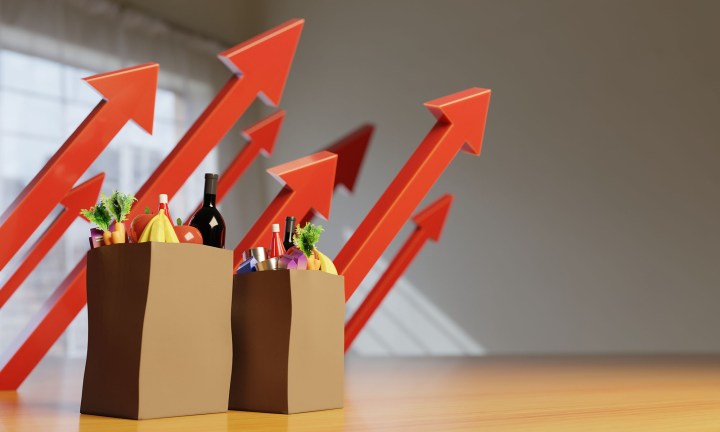COST-OF-LIVING CRISIS
Food traders’ profits have soared faster than food prices – Unctad report

Have fat cats been profiting off the misery of the hungry as volatile food prices soared in recent years? That is certainly one way to read a recent report from the UN Conference on Trade and Development (Unctad), which has found that the profits of food traders have surged much faster than food prices.
The findings, part of a recent Trade and Development Update: Global Trends and Prospects report, will certainly raise some eyebrows. Its release coincides with a cooling of global food prices that scaled record highs last year in the wake of Russia’s invasion of Ukraine, which in turn followed three years of extreme volatility.
South African food prices, for their part, remain on the boil and rose at their fastest pace in 14 years in March, which is partly a consequence of the havoc wreaked by the power crisis.
Read more in Daily Maverick: Cost-of-living crisis – SA CPI accelerates to 7.1% in March, food inflation at 14-year high
Much of the world’s food production and the trade in food products is concentrated in the hands of a few global companies, notably Archer Daniels Midland Company (ADM), Bunge, Cargill and Louis Dreyfus Company (LDC). They are known collectively as ABCD and only two of them, ADM and Bunge, are publicly listed.
That raises concerns about transparency, which the Unctad report notes. Of the 15 large companies it examines, seven are not listed.
“Food trading is part of the wider commodity trading sector, which is notoriously complex, opaque and poorly regulated … The lack of transparency of the sector means that generalisations about profit trends for individual companies, as well as for the sector as a whole, are difficult to make,” the report says.
To clarify things, it focused on profit before tax, using the financial information that is available as well as an Orbis dataset provided by the commercial data publisher, Bureau van Dijk – the only and most reliable source of consolidated information globally on both public and private companies.
Using these tools as its guide to dig into the dirt, the report compares its estimates of the profits of major food traders with the changing price of food.
“FAO food price index increased by 14% between 2021 and 2022. In contrast, both revenues and profits in the food trading sector had grown by a multiple of that figure (see figure below). And it is profits before tax that have increased the most, especially when contrasted with operating profits – a measure that excludes financial revenue – highlighting the critical role that financial operations are playing in this sector and noticeably so since the second half of 2020,” it says.
That begs the question of why the sector’s profit before tax has grown so much faster than prices. The answer, according to the report, is “the finance-enabled capacity of traders to ride the wave of market volatility”.
“The financialisation of commodity trading has been a strong trend in the world economy since the early 2000s, boosted by the spread of securitisation and the introduction of financial market indices for particular commodities. Entry into these markets of hedge funds, banks and asset-backed traders, as well as the growing need for companies in the industry to manage risks associated with international market volatility, have made financial markets the dominant influence on commodity trading,” it says.
“… during the past four years of global economic uncertainty, the ability of commodity traders generally, and of food trading companies in particular, to ride the wave of market volatility by relying on financial mechanisms such as derivatives trade, has been a key determinant of their profitability.”
The report concludes by simply saying that this state of affairs raises concerning questions.
There are a couple of ways of looking at this issue. For pure commodity producers – say, a gold miner – a rising in price will lead to a faster rise in profits if costs are firmly fixed in stone. And it must be said that the companies examined generally offer far more services than simply trading.
Having said that, one of the graphics (see below) highlights the gross margins of various actors, including “independent traders”, and they have indeed been swelling.
Another way of looking at this is through the prism of things like grains futures contracts, which entail the delivery of grain at a specific future date at a certain price. This is done on trading platforms – the JSE, for example, has one.
This is supposed to lend transparency to the market and pricing is based on a range of factors such as the weather and the rand/dollar exchange rate.
But not all market participants actually plan to buy physical grain from a farmer to transform it into a food product for consumption. Speculators trade in the hopes of making profits from volatile price movements, and in turn add an element of volatility to the market. This can certainly be seen in other markets such as forex, and helps to explain the volatility of the rand, for example.
“Many of the futures markets are very liquid and have a high degree of daily range and volatility, making them very tempting markets for intraday traders,” Investopedia notes.
It’s all food for thought and it does seem clear that traders have reaped a nice harvest in profits in recent years from volatile food prices, which have been a major driver of global inflation and a broad cost-of-living crisis.
Whether or not this is a reflection of an honest day’s work or cynical manipulation may lie in the eyes of the beholder. Such markets do play an important role in the global economy.
But the optics are not great and will certainly leave a bad taste in the mouths of many. DM/BM















 Become an Insider
Become an Insider
Comments - Please login in order to comment.